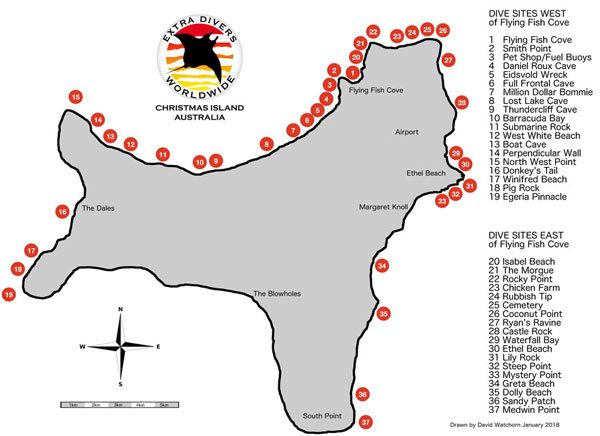www.adcdiving.be © Dirk Wuyts Add this page to your Favorites Welcome to our dive website ADC Diving in Antwerpen - Deurne
Dive sites in Christmas Island in AustraliaDutch - Nederlands |
 Like and share this travel story and diving with photos in Christmas Island Australia with your friends on Facebook |


